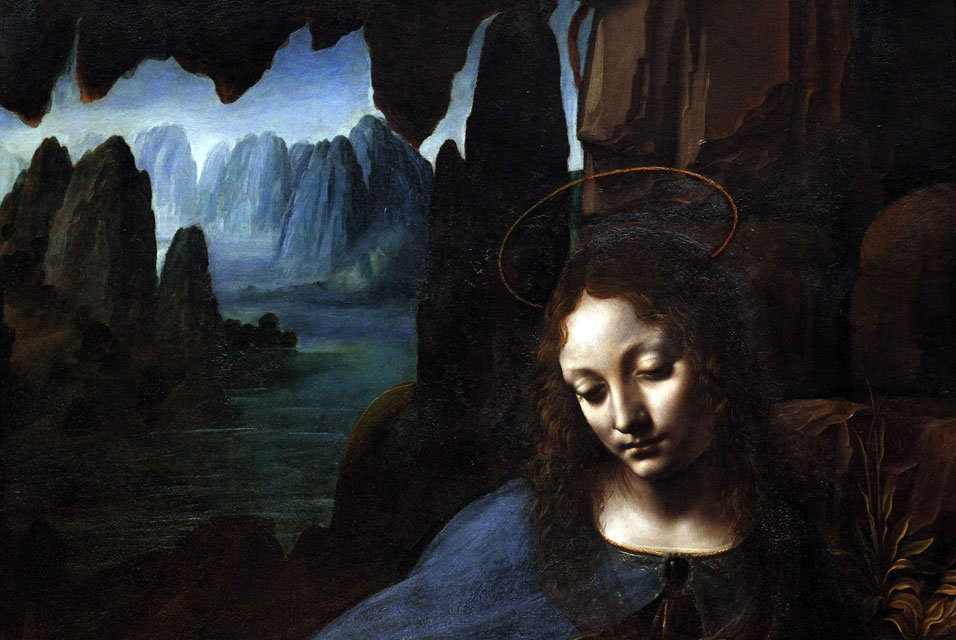Da Vinci discovery: the importance of lost art
Later this year, the National Gallery in London will be opening a new exhibit entitled ‘Leonardo: Experience a Masterpiece’. The shining star of the exhibit is set to be a celebrated picture by fifteenth and sixteenth-century Italian artist, Leonardo da Vinci, called Virgin of the Rocks.
The history of this picture is already rather complex and intriguing; created between the late fifteenth and early sixteenth centuries, the majority of its work was considered to be by an apprentice of da Vinci’s until 2008, when opinion shifted. It is now largely considered to have been painted by the man himself, although the debate continues.
Now, though, it is technology that is responsible for the latest and most fascinating twist in the painting’s tale. Recent scans have revealed a sketch long lost under the veil of the finished work. The medium used for this intriguing sketch happened to contain zinc, which meant it was visible when analysts subjected Virgin of the Rocks to macro x-ray fluorescence scanning. These scanning techniques picked up on the zinc to reveal the sketch underneath the completed painting, which shows an entirely different composition to that of the finished work.
Discovering lost art like da Vinci’s sketches provides an entirely different insight into influential artists and their lives
According to Dr Gabriele Finaldi, director of the National Gallery, the new exhibition of Virgin of the Rocks and its secret sketch is ‘an opportunity to explore da Vinci’s creative process’. This is part of what makes the discoveries such as this one so significant to the art world, as well as the world at large; in sharp contrast to the neat final painting, we can now learn more about the rough, unpolished sketches that show da Vinci’s working method. By creating this exhibition, curators at the National Gallery are making this narrative accessible to the public.
Discovering lost art like da Vinci’s sketches provides an entirely different insight into influential artists and their lives. Of course, the finished version of a painting can give invaluable impressions of the social, political, or religious context in which it was created. However, incomplete earlier versions of such paintings give unparalleled insight into the creative process and independent mind of the artist themselves; in this case, we might wonder why Leonardo changed his mind. This is what makes the recent discovery underneath Virgin of the Rocks so important.
Art historians have also been able to deduce more information about the method used by da Vinci in creating the finished painting. The lost sketches have confirmed that the earliest iterations of the artwork were by Leonardo himself. The appearance of a different composition suggests that when da Vinci started the version of Virgin of the Rocks that is displayed in London – since the original, painted for the Confraternity of the Immaculate Conception in Milan, is in the Louvre in Paris – he originally wanted to create something different, but changed his mind.
It remains to be seen what else can be discovered when other paintings are put under the microscope
Leonardo da Vinci is not the only artist whose works have revealed long-lost secrets after being scrutinized by x-ray scanning. In one of the very earliest uses of x-ray scanning on a painting, scientists discovered an intriguing portrait of a peasant woman hidden under Vincent Van Gogh’s Patch of Grass; Van Gogh frequently reused canvases, and this portrait of a peasant woman fits in with other portraits completed by Van Gogh between 1884 and 1885.
More recently, scans conducted in 2018 on a Pablo Picasso painting named La Miséreuse Accroupie, or The Crouching Beggar, showed that it was painted on top of a hilly landscape painting by another artist. On top of that, it seems that Picasso also used the undulations of these hills to help shape the figure of the woman he painted on top. In this case, x-ray scanning has given an amazing new insight into the freedom and complexity with which Picasso created his artworks.
In creating its new exhibition centering on Virgin of the Rocks, the National Gallery is recognising the importance of x-ray scanning techniques for the revelatory discoveries they have unearthed underneath some of the best-known and best-loved works of art in the world. It remains to be seen what else can be discovered when other paintings are put under the microscope.

Comments